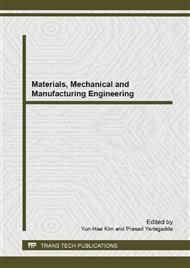p.489
p.494
p.500
p.505
p.515
p.522
p.530
p.536
p.541
A Study of a New Seat-Suspension of Commercial Vehicles Using Magneto-Rheological Dampers
Abstract:
Seat suspension is one of a most important part of a vehicle, also it significantly affects the comfortableness of cars. Compared with traditional dampers, magneto-rheological ones can achieve the condition with continuous adjustable damping force. Compared with electro-rheological fluid, magneto-rheological ones have some merits including noise defending, large damping forces and fast response etc. Based on magneto-rheological dampers, the structural parameters were calculated and characteristic test was conducted. Constant amplitude of 5mm and frequency of 1hz were applied. As the current was respectively changing, the peak of damping forces changed correspondingly. In order to figure out a model, which can illustrated the influence of damping force on current, researchers also identify the magneto-rheological dampers using support vector regression. In this paper, research related with fuzzy control of seat-suspension system has been done by using a Matlab simulation model, so as to verify the damping forces can be adjustable and it has priority on vibration attenuation.
Info:
Periodical:
Pages:
515-521
Citation:
Online since:
November 2013
Authors:
Keywords:
Price:
Сopyright:
© 2014 Trans Tech Publications Ltd. All Rights Reserved
Share:
Citation:


